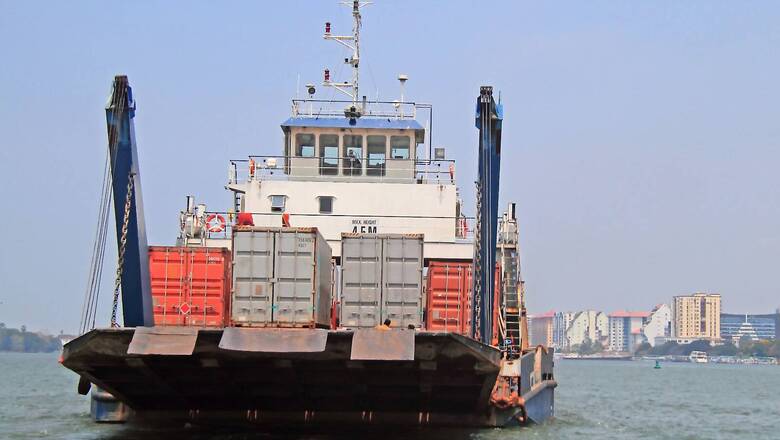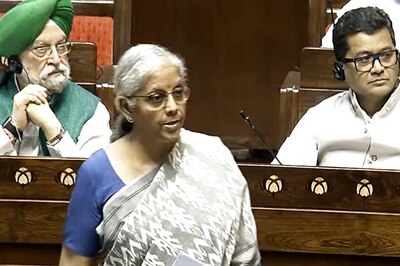
views
The FY22 ended on a cheerful note for India’s international trade. Indian exporters did not just demonstrate COVID resilience but also posted robust growth with record revenues of $419.65 billion, a sign of exports bouncing back strongly. But how significant is this landmark? The Free Trade Agreement (FTA) with Australia and UAE are also being touted by policymakers as a gateway to extensive opportunities for Indian entrepreneurs.
Besides the FTA, another long-awaited aspect is a new Foreign Trade Policy (FTP). Revisited and notified every five years since the 1991 economic reforms, the FTP has been the guiding beacon for all stakeholders – delayed since April 2020 and further extended by six months up to September 30, 2022. The last FTP was notified in 2015, since then it has been periodically extended.
An FTP sets out the regulations for cross-border trade and reveals the government’s position on a host of concomitant yet crucial policy variables such as technology flow, intangibles, and so on. It is essential to clarify the country’s position and alignment with flagship programmes like ‘Local for Global’ and PLI (Production-linked Incentive) schemes, WTO’s ruling against India’s export incentive schemes, besides an overdue review of the SEZ scheme, changing geographical profiles of India’s export basket and implications of the FTAs. Thus, one cannot but over-emphasise the need for an urgent intervention to formulate and notify a comprehensive FTP at the earliest.
Another reason for overhauling the FTP is to assure the export-oriented businesses, which have been reeling under apprehensions due to certain ad hoc, mistimed and contradictory changes to the 2015 FTP. The original 2015 FTP incentivised exports by way of duty-credit scrips directly in proportion to exports. However, in 2020, the government limited the maximum export incentives for goods to Rs 2 crore, and in 2021, limited it to Rs 2 crore for services without reason. To add to exporters’ woes, the changes for services’ incentives were retrospectively notified in September 2021 to be applied from April 2019.
The annual export incentives of Rs 51,012 crore under the Merchandise Exports from India Scheme (MEIS) has been replaced with the Remission of Duties and Taxes on Exported Products (RoDTEP) scheme incentive of Rs 12,454 crore; the rest Rs 38,558 crore has been diverted towards PLIs to give benefit to few champions.
Earlier there was a 3 per cent export incentive on agricultural implements like tractors, which has been reduced to 0.7 per cent. It is not only a discriminatory policy; it may not serve the purpose and be even constitutionally void. It’s an empirical truism that since incentives have an outsized impact on shaping economic behaviour, they must be designed for holistic development.
The prime objective of a foreign trade policy is to facilitate trade by reducing transaction and transit costs and time. Due to inadequate upgraded export infrastructure such as ports, warehouses and supply chains, the average turnaround time for ships in India is about 3 days while the world average is 24 hours.
Moreover, the current foreign trade policy has certain limitations, which crop up from time to time, and in the wake of the pandemic hurdles, exporters have key expectations from the anticipated new FTP: that it will work in a phased manner to address export constraints, examine the regulatory and operational framework to reduce the transit costs and create a low-cost operating environment through developed logistics and utility infrastructure.
Impact on MSMEs
At the heart of the issue are India’s 6.4 crore micro, small and medium enterprises (MSMEs). The sector, the second largest employer to around 12 crore workforce after the agriculture sector, forms the backbone of the Indian economy and contributes about 29 per cent towards the GDP and 40 per cent to international trade, making it vital in achieving the ambitious export trade targets.
The severely increased input costs and fuel costs are both detrimental to the operational success of MSMEs. There’s a rise in prices of raw materials too such as steel and plastics along with a shortage of shipping containers and labour, making matters worse. MSMEs are finding it difficult to take full advantage of the increase in demand and hope the new FTP will ease their woes.
Under the strengthening Services Exports from India Scheme (SEIS), an incentive of 3-7 per cent on net foreign exchange earnings is provided to services exporters of notified services in India. A modification in the minimum cap for the net foreign exchange earnings eligible to claim incentive under the scheme and faster GST refunds to global services are much needed in the new FTP. A further extension in the rollout of the FTP would only make it difficult for MSMEs to leverage the potential of new opportunities ahead of them.
The renewed FTP could change the fate of exporters if incentives granted to retail and wholesale traders under the ambit of being in the MSME category are extended to exporters as well.
What’s needed is for the new FTP to embrace the rapidly changing choices and make use of the explosion in trade through technology and the internet instead of the traditional offline means; else, bringing MSMEs on an equal footing with global competitors will remain a dream.
Infrastructure Upgrade Needed
India needs to invest in upgrading export infrastructure such as ports, warehouses, quality testing and certification centres to stay ahead of technology advanced countries such as China, which plans to spend US $1.4 trillion on infrastructure between 2019 and 2023. Similarly, India also needs to adopt modern trade practices that can be implemented through the digitisation of export processes. Digitisation of trade procedures will save both time and cost.
The Way Forward
The government is likely to set an export target of $800 billion for FY23. To achieve this, we must support MSME exports, intending to focus on the untapped export potential, and help their numbers grow by at least 50 per cent, in order to realise the $5 trillion dream.
The writer is former Vice Chairman, Punjab Planning Board; Chairman ASSOCHAM Northern Region Development Council. The views expressed in this article are those of the author and do not represent the stand of this publication.
Read all the Latest Opinions here




















Comments
0 comment